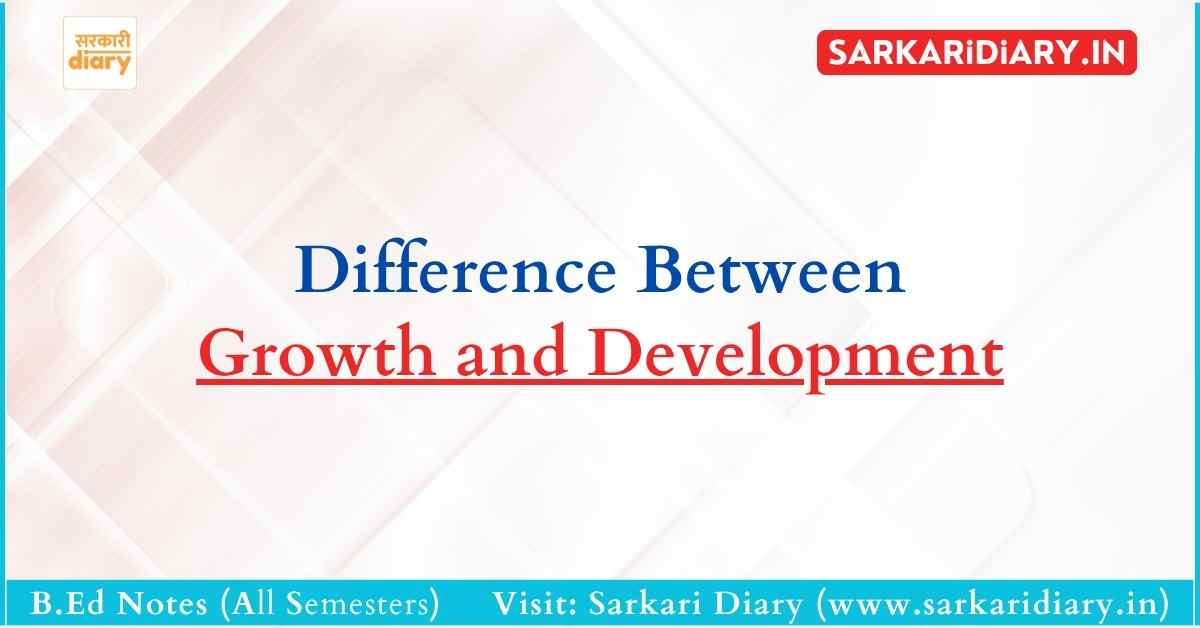Difference Between Growth and Development: Understanding the distinction between growth and development is crucial in the study of human psychology and education. While these terms are often used interchangeably, they hold different meanings and implications, especially when observing the physical, cognitive, and emotional progress of an individual.

What is Growth?
Growth refers primarily to quantitative changes in an individual. It involves measurable increases such as height, weight, body size, and even aspects like vocabulary size.
Examples of Growth:
- Increase in height and weight
- Enlargement of body organs
- Expansion of vocabulary or number of words known
What is Development?
Development, on the other hand, encompasses both quantitative and qualitative changes. It refers to the overall transformation in terms of physical, emotional, intellectual, social, and moral aspects.
Examples of Development:
- Improvement in problem-solving skills
- Development of emotional control
- Progress in social interaction and personality traits
Key Differences Between Growth and Development
The following table highlights the primary distinctions between the two concepts:
| Growth | Development | |
|---|---|---|
| Definition | Quantitative increase in physical dimensions or size | Overall changes—both qualitative and quantitative |
| Scope | Narrower concept | Broader and more comprehensive concept |
| Nature | Physical changes that can be measured | Holistic changes including emotional, cognitive, and social dimensions |
| Continuity | Stops after maturity | Continues throughout life |
| Measurement | Easy to observe and measure (e.g., height, weight) | Difficult to measure (e.g., maturity, intelligence, emotional growth) |
| Complexity | Relatively simple process | More complex and multi-dimensional process |
| Example | Gaining 5 kg or growing 2 inches taller | Becoming emotionally mature or socially confident |
Conclusion
In summary, while growth is a subset of development and focuses on bodily changes, development represents the full spectrum of human progress. Growth may cease after physical maturity is reached, but development continues across the lifespan, encompassing personality refinement, emotional intelligence, and intellectual maturity.
Educators, parents, and psychologists must understand this difference to support individuals effectively at various stages of life.